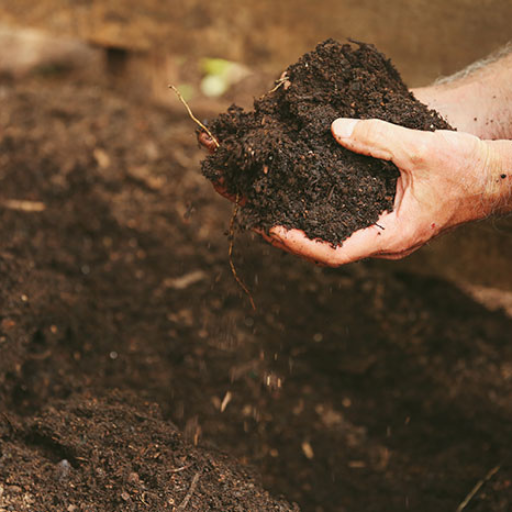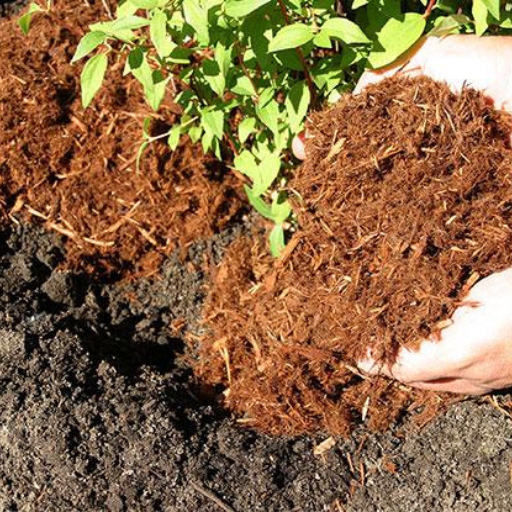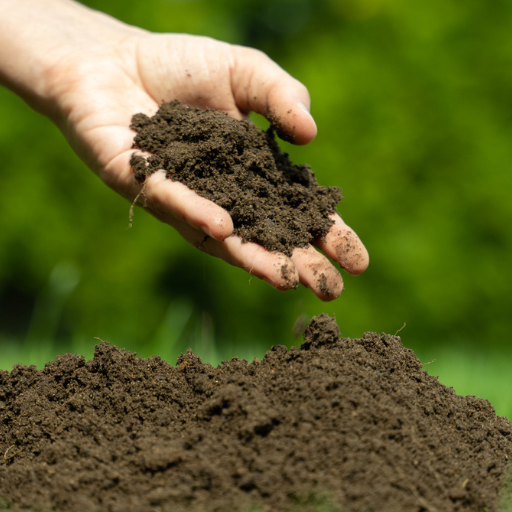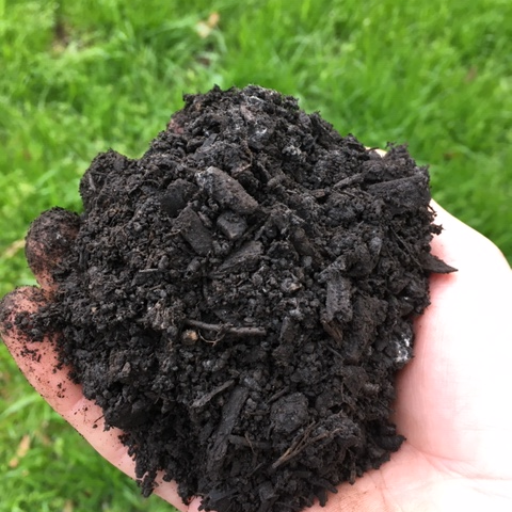Welcome to our comprehensive guide on organic, fertilizer-free potting soil, crafted to help you cultivate a thriving garden naturally. In this blog, we’ll delve into the benefits of using organic top soil, explore how it contributes to healthier plants, and provide essential tips on selecting and maintaining your soil. Whether you are an experienced gardener or just starting, our goal is to equip you with the knowledge needed to enhance your gardening practices sustainably. Join us as we embark on a journey towards a greener, more vibrant garden ecosystem.
What Is Organic Top Soil and Why Is It Important for Your Garden?

A look at the Basics of Organic Soil
Organic topsoil is soil that does not contain any man-made fertilizers and pesticides but rather comprises many natural materials such as decomposed plants and animals. It contains essential nutrients and helpful microorganisms that help to improve the structure of soil, thus promoting healthy plant growth. In addition, using organic topsoil in your garden helps improve fertility of land, water retention as well as supporting a diverse range of beneficial insects and microbes. When you choose to use organic soil, you are not only enabling your plants to grow extensively but also assisting in maintaining a healthier planet for us all.
Why Topsoil is Important in Your Garden
Topsoil has an important role in creating a good foundation for gardening. Firstly it is full of organic material and nutrients which are essential for plant health leading to vigorous growth and increased production. Second, topsoil greatly improves water infiltration and retention thereby ensuring that plants get sufficient moisture while preventing issues related to waterlogging or drought. Lastly, quality topsoil enhances soil structure leading to better root development and aeration which are necessary for strong plant systems. By adding top soil into your garden, it becomes a self-sustaining system because you create an environment where both the plants growing there and the soils flourish.
How Organic Top Soil Is Different From Traditional Potting Soil
Organic topsoil serves different purposes from traditional potting soil when used in gardening or farming activities. Due to high levels of natural organic matter this type is mainly applied on outdoor garden beds with rich fertile soils found on them thus promoting the flourishing ecosystem required by both plants and beneficial organisms. This type of soil is generally denser than potting soil since its main function is ground planting whereby strong roots must develop properly.
On the other hand traditional potting soil refers to lighter medium which made purposely for container gardening alone. Usually it contains mixture such as peat moss, perlite, vermiculite and occasionally supplemented fertilizers to improve potted plants’ drainage and aeration. As a result of such formulation, potting soil is less susceptible to compacting therefore allowing confined root growth in pots as well as planters. Unlike the organic top soil, traditional pots are not always organic as sometimes they may have artificial enhancers for plant growth purposes.
How to Make Your Own Organic Top Soil at Home
Essential Elements in Producing Fertile Organic Soil
Creating fertile organic soil at home requires a combination of several key ingredients that improve soil structure, fertility, and microbial activity. Below are the vital components that are usually recommended by most leading gardening websites:
- Compost: This is an integral part of organic soil because it is rich in nutrients and good microorganisms. Compost is made from decomposed organic material such as kitchen scraps, yard waste or manure which improves soil fertility and water retention.
- Aged Manure: Mixing well-rotted manure obtained from cows, horses, chickens or any other animals helps to provide a huge nutritional boost to the soil. It delivers important elements such as nitrogen, potassium and phosphorous thus improving plant growth.
- Leaf Mold: Decomposed leaves help in enhancing the structure of the soil hence increasing its ability to retain water and allow air passages. Leaf mold improves the environment without bringing diseases or weeds to your garden.
Through mixing them together one can form a nutrient-dense, balanced topsoil with healthy plant growth and gardens full of variety.
Step by Step Guide on Making Your Own Topsoil Mix
- Acquire Ingredients: Collect your main ingredients—compost, aged manure and leaf mold. These can often be sourced from local gardening centers or produced at home.
- Combine Ingredients: In a large plastic container or on a tarp combine equal portions of compost, aged manure and leaf mold with each other using a shovel or garden fork.
- Supplements: To boost nutrient content you might include bone meal, blood meal or fish emulsion as alternative natural substances.This will add extra nitrogen for instance phosphorus among other primary elements necessary for plants survival.
- Test pH level/ adjust pH if necessary:Use a testing kit to determine ph levels within your mixture.Most plants like slightly acidic to neutral ph values (6.0-7.0). The PH has however been adjusted by using lime to increase it or sulfur in other cases that required lower PH.
- Wet the Mix: Gradually add water to the mixture until it reaches a moist, crumbly consistency. The soil should be damp but not soggy.
- Aerate the Mix: Let your top soil mix breathe by turning it over with a shovel every few weeks. This encourages microbial activity and further decomposition of the components.
Use these guidelines to make an organic, nutrient laden topsoil mix that is best for plant growth and gardening sustainability.
Tips to Ensure Proper Water Retention and Nutrition
- Include Organic matter: Incorporating organic material such as compost or aged manure will enable your soil hold water better while giving out nutrients. It increases water-holding ability of soil while slowly releasing nutrients as it decomposes, thus feeding plants.
- Apply Mulch: A layer of mulch on top of your garden helps maintain moisture levels in the soil since it reduces evaporation.Mulching also moderates soil temperature, controls weed growth and supplies organic matter gradually to the ground as it breaks down.
- Watering Properly: Always try watering your garden early in the morning or late in the evening so as to minimize excess loss of water due to evaporation.Drip irrigation or soaker hoses ensure that water is delivered directly at the roots thereby promoting deep root development and minimizing wastage of water.
If you apply these practices, both your soils’ retention capacity for water and their nutrient quality can be improved resulting into productive ecologically balanced gardens.
Can You Use Organic Top Soil in Pots and Containers?

Synonymously, Using Organic Top Soil in Containers
Having organic top soil in pots and containers comes with many advantages making it a favored choice for gardeners and lovers of plants. First and foremost, organic topsoil is rich in nutrients like nitrogen, phosphorus and potassium which are important for the growth of plants. These nutrients help root development and ensure that plants are healthy. Secondly, it helps to enhance soil structure hence better aeration and penetration by roots. This is essential in containers because compressed soil limits the extension of roots. Lastly, addition of organic topsoil assists in retaining water consequently reducing watering frequency as well as providing consistent moisture to plants. Lastly, using organic top soil promotes the activity of beneficial microorganisms which break down organic matter slowly releasing nutrients steadily thus ensuring sustained nutrient supply.
How to Prepare Potting Mix Using Organic Top Soil
To prepare potting mix containing organic topsoil is an easy process that will greatly benefit your potted plants. Start with half part each of organic top soil, compost as well as perlite or sand mixed together thoroughly. Inclusion of compost provides essential nutrients and beneficial microorganisms whereas perlite or sand improves drainage allowing air into the soil instead of being compacted.
Ingredients Required:
- Organic topsoil
- Compost
- Perlite or sand
Steps:
- Mix all ingredients together: Have one part each of organic top soil, compost and perlite/sand mixed well inside a large container such as wheelbarrow.
- Check if it’s right: This mixture should be crumbly but provide good drainage. Just pick some prepared soils hold it on your hand squeeze; it will get together but then fall apart easily.
- Make any necessary adjustments: You might need to alter the portions slightly depending on the plant types involved .For instance you may add more compost for nutrient demanding plants while increase amount used for those that require better drainage like perlitic soils.
Additional Tips:
- If you’re using non-commercial topsoil, make sure to sterilize it before using so that it’s free from pests and diseases.
- Add some organic fertilizers e.g. worm castings or bone meal for more nutrients.
By following these steps, you will be able to create a superior quality organic potting mix which promotes strong plant growth and ensures healthy root system making your container plants flourish.
Good Practices of Using Topsoil in Potted Plants
- Choose Containers Wisely: Have pots with enough drainage holes to avoid stagnating water. These holes should be in the right size as per the plant’s root zone thereby providing space for expansion.
- Ensure Proper Drainage: To improve drainage, put small stones or pieces of broken pottery at the bottom of your pot. This prevents damming up water in the bottom of the pot causing root rot.
- Check on Watering: Over-watering is a common mistake when potted gardening. Keep soil moist always but let them get slightly dry between watering sessions and prior to rewatering feel soil top one inch if it’s wet not water again – if dry please do water.
- Apply Fertilizer Regularly: Potted plants have higher nutrient requirements than those grown in open fields. Thus use balanced slow-release fertilizer like compost tea and other organic alternatives throughout their growing seasons.
- Appropriate Placement: Put the pots in places that fit the light requirements of your plants. Some plants prefer full sun, while others need partial shade. Move their position to adjust for the changing angle of the sun over a year.
- Trimming and Repotting: Regularly cut off any dry or yellow leaves to encourage new sprouts and maintain plant health. Change pots when they outgrow their containers which typically happens after 1-2 years, this enables you to freshen up soil and create enough space for root growth.
By these best practices, your potted plants will thrive thanks to enriched nutrients and aeration provided by your artisanal potting mix.
What Are the Best Soil Amendments to Use With Top Soil?

Top Options for Organic Compost and Mulch
The following good quality organic compost options are highly recommended when applying to top soil as per the information from some of the best websites:
- Compost: High-quality compost provides vital nutrients and improves soil structure. Always go for compost made from well-decomposed organic materials such as kitchen waste, yard waste or manure that is dark in color, crumbly and smells like loam. Among the best composts include homemade compost, mushroom compost, worm castings.
- Leaf Mold: Leaf mold is decomposed leaves resulting in a rich humus-like substance. It helps keep soil moist and slowly releases nutrients into it. Collect fallen leaves every year allow them to rot down into your own leaf mold.
- Aged Manure: Aged cow/horse/chicken dropping make excellent amendments for topsoil enrichment. Do not use fresh manure as it may be too strong on plants leading to burnout. Aged manure thus provides consistent supply of nutrients and improves on the overall structure of the soil.
When you integrate these organic mulches into your topsoil, you enrich its fertility and wellness greatly, which leads to robust plant growth.
Using Manure to Increase Soil Nutrients
Manure is an organic fertilizer that increases soil nutrient levels necessary for increased productivity by boosting its fertility level hence increasing crop yields. It is rich in macronutrients like nitrogen, phosphorous and potassium among other micronutrients necessary in development of plants (Top Websites).
- Manuring Considerations: Some key issues must be kept in mind when using manures concerning what has been found from top internet pages regarding this topic:
- Composting Manure: This practice helps in reducing pathogens and minimizing odors before application of such materials onto soils; thus making them safer for improving soil health when used as recommended.
- Application Rates: The rates at which manure should be applied matter so much since over-application may lead to nutrient run-off and potential groundwater contamination. In order to get optimum results, always apply manure in recommended quantities.
- Timing: During the growing season manure is applied into the soil or incorporated into it during fall for decomposition over winter so as to nourish plants with nutrients once they start growing.
By following these best practices, manure can be a valuable resource for enhancing soil nutrients and promoting vigorous plant growth.
Role of Coco Coir, Wood Chip and Peat Moss in Soil Improvement
Soil amendment involves use of Coco coir, wood chip and peat moss each having different roles of enriching soil structure, moisture retention, and aeration.
Coco coir obtained from coconut husks is highly desired because it does well at retaining water while at the same time providing excellent drainage and air pockets. Coco coir creates conducive environment for plant root system development thus preventing compaction of soils as well as supporting healthy root growth.
Wood chips enhance soil structure by adding organic matter which increases its ability to retain moisture and nutrient levels. Also after decaying they add essential nutrients back into the ground thus serving as a good habitat for microorganisms beneficial to plant health. However fresh wood chips may initially reduce nitrogen content in soils hence composted ones are often preferred (Woodroff).
The reason why peat moss is famous is due to its best water holding capacity and ability to keep the soils acidity in balance. This prevents the soil from compacting too much which gives even distribution of nutrients. Nevertheless, one needs to note that peat moss is non-renewable therefore other organic amendments such as composted bark may be preferred for sustainable practice.
By thoughtfully integrating coco coir, wood chip and peat moss into the soil, gardeners and farmers can greatly improve the quality of their soils making them fertile promoting more sturdy plants.
How to Maintain Healthy Organic Top Soil in Your Garden

How to Maintain Soil Health and Longevity
There are several key practices that I use to maintain a healthy organic topsoil in my garden. First, I continually incorporate into the soil such organic matter as compost, manure which is old as well as the clippings from gardens. This adds essential nutrients to the soil and also enhances its structure and moisture-holding capacity. Secondly, I follow crop rotation and intercrop planting so that soil nutrient depletion is prevented and diseases’ risk is lowered. Moreover, mulching using organic substances like straw or clippings of grass safeguards the surface of soil, maintains moisture levels and suppresses weeds as well. For instance, I do not disturb my soils much when gardening by practicing no-till farming which helps conserve their structures including beneficial organisms within them. Finally, appropriate drainage should be ensured while avoiding over-irrigation for prevention of soil erosion or compaction. By doing this, therefore we can ensure that our garden’s topsoil remains productive for long periods thereby leading to strong plant growth.
Improving Soil Microbes And Organic Matter
To improve on soil microbes and organic matter there are few strategies that I follow closely. Firstly, it is important to note that I apply different types of composts to my farm i.e., diverse organic amendments such as composts topped with cover crops, and organic mulches all year round. These materials contain essential nutrients, provide habitat for beneficial microorganisms among other reasons for their use in gardening activities including improving land fertility & productivity while preventing diseases caused by pathogens i.e., fungi or bacteria. Secondly I ensure the ground is always damp but not waterlogged since this creates favorable conditions for microbial activities in farmlands. Thirdly relying on natural methods instead of chemical fertilizers/pesticides ma help keep these microscopic creatures alive by not killing their food sources entirely thus helping maintain an equilibrium between pests/parasites & other organisms within the environment of an area. Also, minimal tillage is considered since it helps maintain soil structure and microbial habitats. This allows me to cultivate a living organic soil that facilitates healthy plant growth.
Preventing Soil Degradation and Promoting Regenerative Gardening
Soil degradation prevention and regenerative gardening need a holistic approach towards soil health management. To prevent soil degradation I use crop rotation and diversity which helps break pest and disease cycles as well as improve the structure of soils. In addition, I do contour farming together with planting hedgerows to minimize soil erosion. Furthermore, I continuously add organic matter to maintain fertility in my garden’s topsoil. On the other hand, for regenerative gardening, building up of soil organic matter is done through composting, green manuring or using cover crops. Moreover, mulching is necessary for maintaining vegetation cover on the ground so as to protect from erosion also temperature extremes thus helping keep sunlight off our farm fields which in turn reduces evaporation resulting from high temperatures/winds hence preventing its frequent drying out much faster than expected.. By promoting a lively non-fussy biological system that is least disrupted by cultivation methods; this will create conducive environment for different functions enhancing improved quality-of-life while boosting yields per unit area thereby reducing reliance on external inputs through sustainable agriculture methods that sustainably increase productivity & profitability without harming/destroying nature (soil organisms) concurrently!
Frequently Asked Questions (FAQs)

Q: What is found in organic garden soil?
A: Sandy soil, clay soil, peat moss, pine bark and other organic materials are commonly mixed in organic garden soils. Also it may contain beneficial soil microbes and mycorrhizae that enhance the growth of plants as well as improve the soil health.
Q: Can I grow potted plants using organic topsoil?
A: Yes, potted plants can be grown using organic topsoil. While potting, it is essential to ensure that the soil used has been specifically manufactured for support of container plants that include nutrients required by them and proper drainage.
Q: What is sphagnum peat moss’s role in organic garden soil?
A: Sphagnum peat moss is applied to soils to help improve moisture retention, aeration, and nutrient availability in organic garden soils. This helps create conditions favoring plant survival for those plants requiring well-drained yet moisture-retentive growing environments.
Q: Is it good to mix my native soil with organic topsoil?
A: Organic topsoil can be used to add value to native soil. This improves its structure, fertility and drainage making it friendly for healthy plant growth especially if you have an organically maintained healthy garden.
Q: Why should I use regular topsoil instead of regular topsoil
A: Organic topsoil contains no synthetic chemicals but is rather made from natural elements which make it not only environmentally friendly but also safe for edible crops; thus supporting sustainable gardening practices while maintaining a balanced ecosystem in your garden.
Q: How does an organic topsoil contribute to a healthy garden?
A: A fertile environment that promotes strong plant development, enhances nutrient availability and encourages beneficial microbial activity is provided by this rich substrate. This way you will have created a flourishing orga- nic (fertilizer-free) garden without applying chemical fertilizer-based inputs.






